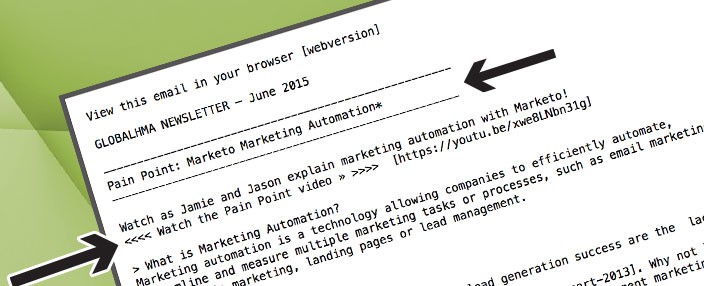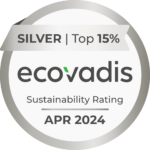Beautifully designed HTML emails usually turn the most heads, but not enough people talk about plain-text emails and their ability to drive conversions. While they’re not as pretty, plain-text emails are important for various reasons. Here are our top 10 best practices for creating plain-text emails:
- Every HTML email blast should have a plain-text version. If you are using an email client that does not automatically create a plain-text version, you must manually set up a plain-text version. Without a plain-text version, spam filters tend to mark your email as spam and consider it untrustworthy.
- Make sure your plain-text version’s copy and links match up to your most recent HTML email version.
- If you are using an email client that automatically generates a plain-text version, be make sure your plain-text version contains all your copy. When automatically generated, most email clients will generate your plain-text version using the live copy in your HTML email blast. This generated copy will not include any text that may be part of an image or graphic. So, you might have to manually type in this information.
- Think about what type of email browser your subscribers are most likely to use to read your email. Some email browsers actually include a direct link to the plain-text version. For other email browsers, the plain-text version is the default due to technology restrictions.
- Use white space to help create hierarchy in your email. Extra returns and spaces can do miracles for the readability of your email blasts. Use this to separate out sections of copy and links.
- While white space does create visual hierarchy, it’s important to not over-do it with too many returns. Next thing you know, your email contains valleys of white space and not enough content.
- Use special characters and formatting to call out the main headings in the plain-text version of your emails. For subheads, separate them out by using an extra return. For your main header, use special formatting and text characters to call your headings out. Instead of your header looking like this:
globalHMA hosts open house in new building
You might want to show this instead:
———————————————————————————–
globalHMA hosts open house in new building
———————————————————————————– - Similar to calling out the headers in your email, highlight the call-to-actions in your email with special characters, as well. Instead of a header like this:
Learn more <http://globalhma.com>
You can show this instead:
<<<< Learn More >>>> <http://globalhma.com>
- When testing final versions of your HTML emails, remember to send a test of your email’s plain-text version, as well.
- Again, make sure the email copy and links in your plain-text version match up to your most recent HTML email version.
By implementing these best practices, you can easily create a more compelling and effective email campaign. How do you use plain-text emails to create conversions? Do you have any tricks?





2 Comments